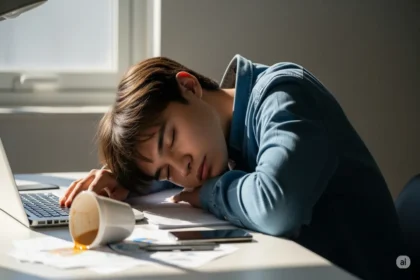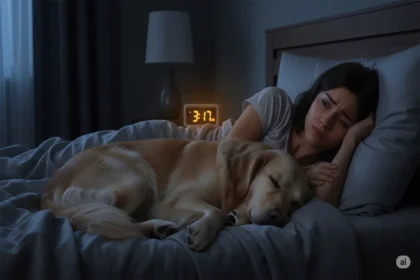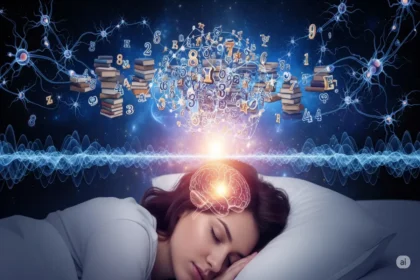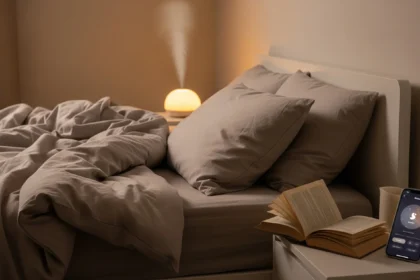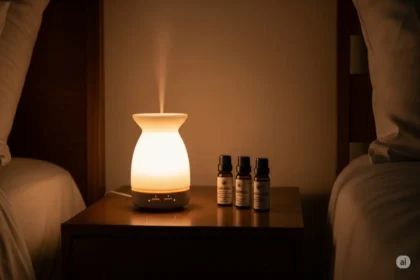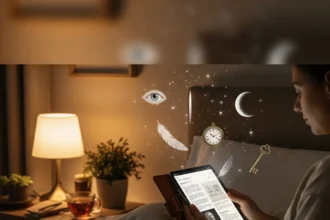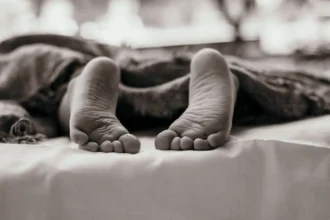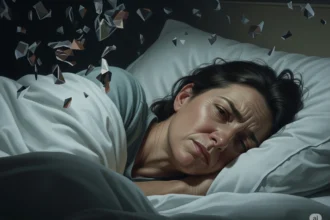For most of us, sleep is a predictable journey into unconsciousness, a nightly ritual of rest and rejuvenation. We drift off, dream, and wake, often without much thought to the intricate processes unfolding within our brains. But sometimes, Sleep Gets Weird. The seemingly ordinary act of slumber can transform into a bizarre landscape of unsettling experiences, peculiar behaviors, and phenomena that blur the lines between wakefulness and dream. From vivid hallucinations to complex actions performed without conscious awareness, the strange side of sleep offers a fascinating, sometimes unnerving, glimpse into the depths of the human mind and the delicate balance of our nocturnal brain.
Imagine waking up paralyzed, unable to move or speak, yet fully aware of your surroundings, perhaps even sensing a shadowy presence in the room. Or picture someone getting out of bed, preparing a meal, or even driving a car, all while profoundly asleep. These aren’t scenes from a horror movie; they are real, scientifically documented occurrences that highlight the extraordinary complexity of our sleeping brains. While often unsettling for those who experience them, these phenomena provide invaluable clues to neuroscientists trying to unravel the mysteries of consciousness, memory, and the very purpose of sleep.
The Hypnagogic and Hypnopompic Realms: Borderlands of Consciousness
The transition zones between wakefulness and sleep are often where the first signs of peculiar sleep phenomena emerge.
Hypnagogic Hallucinations: Seeing Things Before You Sleep
As you drift off, your brain can sometimes produce vivid, dream-like experiences known as hypnagogic hallucinations. These can be visual (seeing patterns, faces, or even full scenes), auditory (hearing voices, music, or strange noises), or even tactile (feeling sensations like floating or falling). Unlike true hallucinations associated with psychosis, these are benign and occur when the brain is in a liminal state, not yet fully asleep but no longer fully awake. They are surprisingly common, affecting up to 70% of people at some point in their lives.
Consider the experience of Sarah, a university student, who often sees intricate geometric patterns or fleeting faces just as she’s about to fall asleep. While initially unsettling, she’s learned to recognize them as a sign that sleep is imminent. Scientists believe these hallucinations arise from the brain’s visual and auditory cortices becoming active without receiving external sensory input, essentially “misinterpreting” internal neural noise as external stimuli.
Hypnopompic Hallucinations: Waking Up to Visions
Conversely, hypnopompic hallucinations occur as you are waking up. These are less common but can be equally vivid and often more disturbing, especially when combined with sleep paralysis. They arise from similar mechanisms as their hypnagogic counterparts but at the tail end of the sleep cycle.
Sleep Paralysis: Trapped Between Worlds
Perhaps one of the most terrifying and widely reported sleep phenomena is sleep paralysis. This occurs when a person wakes up from REM sleep but the body’s natural muscle paralysis (atonia) — which prevents us from acting out our dreams — persists. The individual is fully conscious, aware of their surroundings, but completely unable to move or speak. This state can last from a few seconds to several minutes and is often accompanied by intense fear, a feeling of pressure on the chest, and vivid hallucinations.
Many cultures have ancient folklore explaining sleep paralysis, often attributing it to malevolent entities like “night hags,” demons, or extraterrestrial abductions. In scientific terms, it’s a temporary glitch in the brain’s transition between sleep and wakefulness, where the brain “wakes up” before the body’s motor control system does. The terrifying hallucinations often stem from the brain’s attempt to make sense of the unusual sensory input (or lack thereof) during this state, sometimes projecting internal fear into external presences. It’s estimated that between 5% and 8% of the general population experience sleep paralysis regularly, with higher rates among students and those with irregular sleep schedules.
Parasomnias: When Sleep Gets Active
Beyond the borderlands of consciousness, some sleep phenomena involve complex behaviors performed while asleep, known as parasomnias. These are disorders of arousal, characterized by abnormal movements, behaviors, emotions, perceptions, or dreams that occur while falling asleep, during sleep, or upon waking.
Sleepwalking (Somnambulism): Nocturnal Wanderings
Sleepwalking is one of the most well-known parasomnias, where a person gets up and walks around while in a state of deep NREM sleep (typically N3 or slow-wave sleep). Sleepwalkers can perform a range of activities, from simple movements like sitting up in bed to more complex behaviors like getting dressed, preparing food, or even leaving the house and driving a car. They typically have no memory of these events upon waking.
The scientific explanation for sleepwalking involves a partial arousal from deep sleep. While the motor centers of the brain become active, the higher cognitive functions responsible for consciousness, memory, and judgment remain asleep. Stress, sleep deprivation, certain medications, and genetics can all increase the likelihood of sleepwalking. While often harmless, it can be dangerous if the sleepwalker engages in risky activities.
Sleep Talking (Somniloquy): Unconscious Conversations
Sleep talking is another common parasomnia, involving speaking aloud during sleep. It can range from mumbled, incoherent sounds to full, complex sentences. Sleep talking can occur during any stage of sleep, but it’s often more coherent during NREM sleep. Like sleepwalking, the person has no memory of talking upon waking. It’s generally considered benign, though it can be disruptive to bed partners.
Night Terrors: The Scream in the Night
Distinct from nightmares, night terrors are far more dramatic and terrifying. They occur during NREM deep sleep, typically in the first few hours of the night. A person experiencing a night terror will suddenly sit upright in bed, screaming, thrashing, and often appearing terrified, with dilated pupils, rapid breathing, and a racing heart. Despite their apparent distress, they are not truly awake and are unresponsive to comfort. They usually have no memory of the event the next morning.
Night terrors are more common in children but can occur in adults, often triggered by stress, sleep deprivation, or fever. They represent an abrupt, incomplete arousal from deep sleep, where the body’s “fight or flight” response is activated without the accompanying conscious awareness of a dream narrative.
REM Sleep Behavior Disorder (RBD): Acting Out Dreams
While sleep paralysis involves the persistence of muscle paralysis upon waking, REM Sleep Behavior Disorder (RBD) is its opposite: the absence of muscle paralysis during REM sleep. Individuals with RBD physically act out their vivid, often violent or distressing dreams. They might punch, kick, shout, or even jump out of bed, potentially injuring themselves or their bed partner.
RBD is a serious condition because it can be an early indicator of neurodegenerative diseases such as Parkinson’s disease or Lewy body dementia, sometimes appearing years or even decades before other symptoms. The brainstem mechanisms that normally inhibit muscle movement during REM sleep are impaired, allowing the dream content to be physically expressed. Diagnosis and treatment are crucial, not only for safety but also for early detection of potential underlying neurological conditions.
Exploding Head Syndrome: The Loud Bang in Your Head
Exploding Head Syndrome (EHS) is a less common but particularly startling parasomnia. Individuals experience a sudden, loud noise in their head as they are falling asleep or waking up. This “explosion” is not real; it’s a hallucination, often described as a bang, crash, or loud pop, sometimes accompanied by a flash of light or a jolt of electricity. It’s not painful, but it can be terrifying and cause significant anxiety about falling asleep.
The exact cause of EHS is unknown, but theories suggest it might involve a burst of neural activity in the brain’s auditory processing centers during the transition between wakefulness and sleep. It’s generally considered benign, though it can be distressing.
The Science Behind the Strangeness
These strange sleep phenomena, while diverse in their manifestations, often share common underlying mechanisms related to the brain’s complex sleep-wake cycles. Many parasomnias are thought to occur when the brain gets “stuck” between sleep stages, or when certain brain regions activate while others remain dormant. For instance, in sleepwalking, the motor cortex is active while the prefrontal cortex (responsible for judgment and consciousness) is not.
Factors that can increase the likelihood of experiencing these phenomena include:
Conclusion: The Uncharted Territories of the Mind
The world of sleep is far more dynamic and mysterious than our quiet slumber suggests. From the eerie stillness of sleep paralysis to the perplexing actions of a sleepwalker, these strange phenomena remind us that our brains are constantly active, even when we are seemingly at rest. They are not just curiosities; they are vital clues that help neuroscientists map the uncharted territories of consciousness, memory, and the intricate neural networks that govern our waking and sleeping lives.
While often unsettling for those who experience them, these “weird” aspects of sleep underscore its profound importance and complexity. They highlight the delicate balance required for truly restorative rest and the intricate dance between our conscious and unconscious selves. So, the next time you drift off, remember the extraordinary journey your brain is embarking on, a journey that can sometimes lead to the most fascinating and bizarre corners of the human experience.
Disclaimer: The information provided in this article is for general informational purposes only and does not constitute medical advice. It is not a substitute for professional medical advice, diagnosis, or treatment. Always seek the advice of your physician or other qualified health provider with any questions you may have regarding a medical condition. Never disregard professional medical advice or delay in seeking it because of something you have read on this website.



